
|
||
|
Portland art blog + news + exhibition reviews + galleries + contemporary northwest art
|
||
More Relevant than Rembrandt: Kehinde Wiley at PAM
Posted by Amy Bernstein on June 08, 2007 at 8:39 | Comments (22) Comments Ooooh someone's been to planet fiesty! It's true though Rembrandt was using iconography based on a belief system that even most modern Christians barely comprehend, back then everyone knew the iconography... it's a somewhat dead language like latin and Wiley is very current. Both artists traffic in anachronism. Still, I gotta think Rembrandt's reach far eclipses his namesake toothpaste. Will Wiley have a line of bass fishing boats named after him 400 years from now? I also find the fact that Rembrandt toothpaste has "whitening" properties very annoying as Rembrandt van Rijn probably had the most complicated black tones of any artist. The question with Wiley is... is he really a revolutionary or is he a good painter filling out a much needed/valid role? He's still developing too, with the career equivalent of the earliest Rembrandt in the PAM show. I don't intend it as a slam but many of Wley's works remind me of that Seinfeld painting, "The Kramer"... yet they couldnt be more different on a lot of exciting levels.... especially after Richard's outbursts. I have to say though Wiley takes the prize for best use of sperm in a painting ever... St. Lucy absolutely slays me with that witty decorative move. Posted by: Double J These paintings suck and he went to Yale. BFD Posted by: clarklovins Ditto. Revolutionary? Not media driven? Media as the sole contemporary cultural and political filtering engine is definitely the vernacular, and a highly unoriginal application of it at that. These paintings, while I am sure stunningly executed, are dully assimilable. This is revolution as malt-o-meal. We are all very well programmed for this experience. Everything is expertly played out, from the alluring treatment of the medium, the initial shock of appropriation and context, to the final self-satisfaction of having "gotten it". Nothing dangerous here. Seen it before, seen it done better. But they are gorgeous to look at, and (of course) sell very, very well. Posted by: joewbrown I'm having trouble with the gold frames.... St. Lucy doesnt have one and I like that. The frames are prominent yet seem like gaudy afterthoughts... I think gaudy theatrical devices expertly tuned for maximum effect would be much better. Anyone else have thoughts on the frames? I like the show and though the imagery isn't revolutionary in the broader scope of western culture... they are in the rarified museum world (for some that doesnt count). Still, it is pretty exciting that they are in Portland. He's young and I suspect will develop a lot more in the next 5 years, compositionally tese are great but I think he needs a lil of Gaijin Fujita's balls... I could see those two working together actually. His frontier is ornament and in 5 years I think he might be able to silence his critics with it. What about tile or frescos? He will be in Portland in mid July and I hear he wants to go fishing in the Columbia... Sturgeon? Posted by: Double J While the figures stand lithe and muscled, the artist's posture is far less brawn than brain which makes for a set of dull boys. Posted by: Norma Dee Plume Well it's a painting show not a dating service. What I like best is how the figures are portrayed as patrons and technically they are the patrons of Nike, champion, Addidas etc.... not exactly Le Dauphine but there is this "next in line" pregnancy or potential to most of the images. Still these athletic brands are recieved forms of token heraldry and station. I find the clothes interesting... one young woman I went to grad school with studied Elizabethan dress... court life. This is an interesting reversal. Posted by: Double J Despite the inherent simplicity of the ideas and compositions behind these images, I still find it odd that no one really speaks to the real issues they address. Yes, he went to Yale. Yes, they are media driven. But the fact still remains that young African American males are not placed in these contexts. I would love more support behind the opposition to this article. I have the feeling at the moment that all of the opposition is the trend of political correctness and anti-establishment, which, without any sort of intellectual backing, seems a bit boring. Stand some ground please, dear opponents. Posted by: Amy B What are the issues that you think the paintings address? Young African American males aren't placed in which context? Paintings? Art History? Or the Portland Art Museum? Posted by: jerseyjoe Corporate fluff hip-hop indulgence playing to snooty, hi-brow art circles who have left out the real (multi)cultural debate all too long. Posted by: TJ Norris Yet, a technically proficient painter who dareth criss/cross that fine cultural line....but I stick to my original opinion after seeing the show: "This NY-based Yale MFA has a short, yet impressive exhibition history dating only back to 2003 and the “monumental” work on view truly synergizes the much needed urban African American hip-hop culture voice in contemporary art. The huge, ornate frames alone are a gaudy statement to the overcasting young black Americans staring us in the face here. The hyper-real faces, and muscular male bodies mesh well with the contrasting floral patterns and other decorative layered elements in oil and enamel. Most of the faces are stoic, fearless, guarded. The handful of pieces in the room dominate their very own trompe l’oeil space, men as towering totems of humanity in jeans, gold chains, do-rags and sportswear. The gaze says it all." Posted by: TJ Norris ;) I think Wiley can transcend that possibly damning truism/concern TJ... the trick is to evolve from here. The art world is awfully white bread and it always makes one wonder how much of the buzz is because it is good and how much is just liberal guilt. Annoying as hell that artists like Ofili and Walker were held to a higher standard to prove themselves... then again they met those challenges. Right now I think Wiley is a lil underdeveloped compared to those artists... Still he's way younger in his career and though it isnt fair I think he's got a real shot at answering all questions regarding his importance. I think he needs a permanent architectural project... a chapel? Just paintings are a little too convenient for ambitions like the ones I sense here. It is hilarious that Bruce chose them for a PAM show, gutsy. Posted by: Double J Poor provincial Portlanders... Posted by: bam Entire tomes could be written about how Arvie Smith only uses white models for his black goddess paintings, how William Pope L's audience is made up of mostly white people, how Damali Ayo's biggest patron is a white woman, and how black artists who don't make work that reads a "true" to the black experience to white people, aren't very successful. But then we're talking about everything but the art. Posted by: jerseyjoe No, really, these paintings suck. Posted by: clarklovins They suck? I don't think anyone with a critical eye could simply write these paintings off as easily as just saying they "suck". That is just plain lazy. Granted, saying these paintings are more relevant than Rembrandt, is a hard pill to swallow (even though Amy is probably right). Either way, the paintings certainly do not "suck." Posted by: Calvin Ross Carl
Exactly. Which brings me back to the previous post. It is so much fun to banter, but we are still not really talking about the art, just riffing. Doesn't say much for the art, but telling nonetheless. Posted by: joewbrown Are you all so in love with the sound of your own voices that you can't here the truth? blah blah blah portland. Posted by: bam by the way ***removed*** joewbrown, no nothing is clever about a black artist make black art about being black... ***[warning, no namecalling -the management]*** Posted by: bam Wow! To elicit such a response demands reconsideration! Perhaps I stand corrected...maybe Wiley is revolutionary. :) Posted by: joewbrown damali ayo spells her name entirely in lower case. Posted by: sims I find it pretty astounding that the Wiley show has created such a debate. I guess that's refreshing (I wish that every decent show in town could cull such dialog), although the downside of the blog format is apparent here with the brain-dead patter from a couple folks. I finally saw the show today. It was my first time in the new wing (been gone awhile) and I was a little befuddled at the random feeling of the collection as I came down the corridor (I'm seeing Laurie Reid, Su-en Wong and Roxy Paine all in a row and just going, huh?), but the small gallery at the end does lend itself to a reverential, almost chapel-like mood. My feeling had been, going into the show, that Mr. Wiley is obviously a very talented young artist, with a knack for spectacle, and one pretty great idea that he's been riding hard for the last few years. The show didn't really change that perception, although I found myself discovering new and subtle layers to what I had previously dismissed as pretty straightforward stuff. I think Wiley's paintings are more complicated than they seem, and that one can experience these pieces on several levels. They are not made in China (in case anyone was giving that person half an ear), but they are indeed made mostly by assistants now (Wiley still does the hands and faces). Many successful painters in New York are on crazy production schedules and use several assistants, but it seems from this discussion that Wiley's prolific output is starting to overshadow the work. I really don't think he intends the marketability of these things to become another dimension of the project in like a, say, Jeff Koons kind of way. Although standing before the towering visage of St. Lucy today, I snickered to think that there are probably a few collectors with Wiley's work who would cross the street to avoid the subjects in real life, but fawn over their beauty on the mansion walls. It feels absurd to compare Wiley to Rembrandt, given that we don't even know if Wiley will be a successful midcareer artist yet, much less a lasting influence on the entire history of painting. Gajin Fujita makes a bit more sense, as they're contemporaries (and used to show at Kravets Wehby together, so I bet they know each other), although I certainly hope Wiley doesn't start putting graffiti behind his subjects. I thought instead of Silvia Sleigh (maybe because I just saw the 'WACK!' show), and her feminist revision of Manet and the male gaze. Kurt Kauper also came to mind. Like Wiley, both Sleigh and Kauper seem to get good mileage out of deceptively simple contextual shifts in the established range of portraiture. What remains to be seen is Wiley's staying power. Like the 80s, we're seeing a lot of young hot shots who could either be this decade's equivalents of Mike Kelly- always evolving and challenging- or they could be like David Salle, coasting on the same idea, more bland each time. Posted by: inexile Sorry about the idiots, we are cracking down, glad to see your comments. I feel the same way....Wiley has got something but he needs to evolve a bit lest he become like Salle. Fujita made a lot of sense to me as a peer of Wiley... Aya Eukawa too (all K.W. alumni). All tend to be youth dipped in pattern. Wiley isnt as strong a patternist as those other two but he's got some other strengths... incuding better POP connections. PAM needs a re-hang... with a lot more breathing room. The Paine is a new addition from last year. It was created not 40 feet away from where it now hangs by Paine's PMU. Maybe if there is a major string of new aquisitions (there are some but probably not enough for a re-hang) it will be enough to rehang. I suspect they are waiting for something more major before undertaking that task. Posted by: Double J Post a comment Thanks for signing in, . Now you can comment. (sign out)
(If you haven't left a comment here before, you may need to be approved by
the site owner before your comment will appear. Until then, it won't appear
on the entry. Thanks for waiting.)
|
| s p o n s o r s |
 |
 |
 |
 |
 |
 |
 |
 |
 |
 |
 |
 |
 |
 |
 |
 |
 |
 |

|
Site Design: Jennifer Armbrust | • | Site Development: Philippe Blanc & Katherine Bovee | |


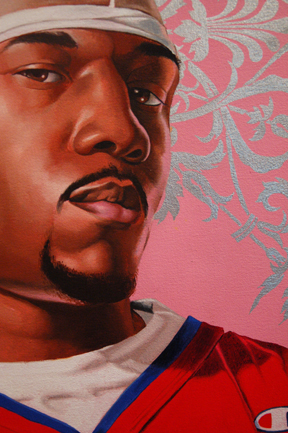
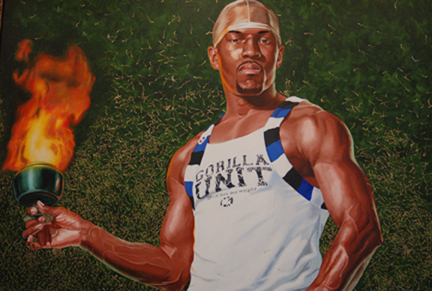
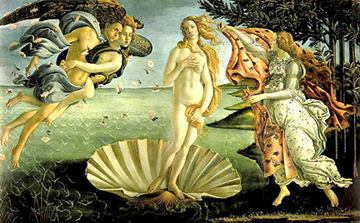
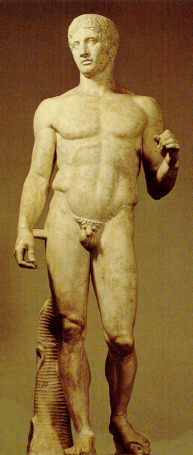
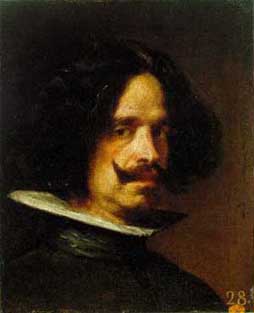
![[TypeKey Profile Page]](http://www.portlandart.net/nav-commenters.gif)